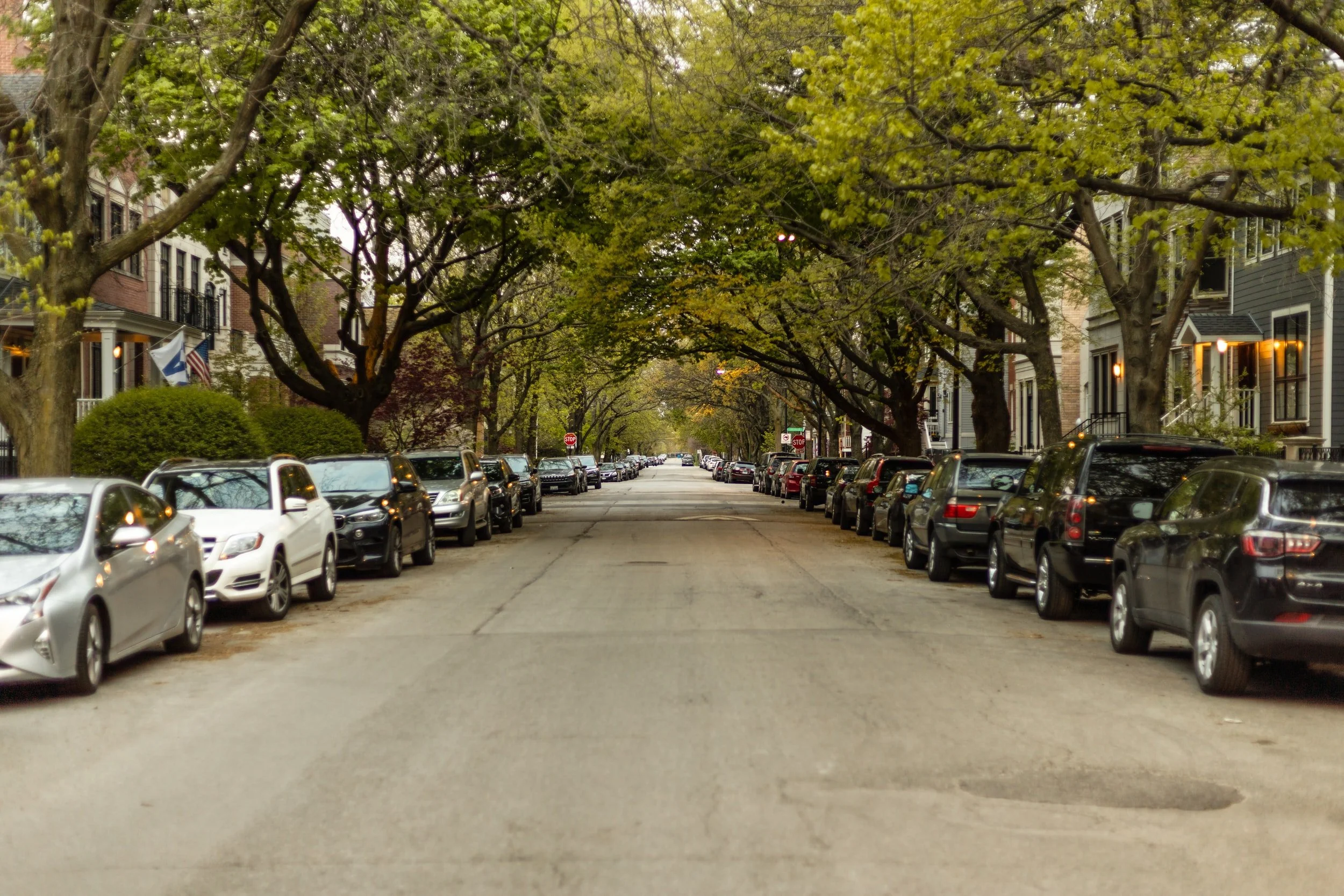How Important Was the Single-Family Zoning Ban in Minneapolis?
By Jake Blumgart, Governing, May 26, 2022
word count: 1773
Walking with Janne Flisrand around Lowry Hill is an eye-opening game of spotting hidden density in this leafy upscale neighborhood just southwest of downtown Minneapolis.
Here’s an artfully concealed duplex, there a granny flat above a garage. Some blocks have ancient fourplexes cheek to jowl with large single-family homes, although the casual observer might struggle to see the difference. This is the future she wants, one that looks more like the early 20th-century diversity of homes than the single-family dominance of the post-zoning era.
Lowry Hill is divided from an area called The Wedge, its funkier and denser cousin, by the old redlining boundary of Hennepin Avenue. The two look very much alike, but in Flisrand’s neighborhood the zoning was changed to give single-family homes precedent. No new apartment buildings went up after the 1920s, further-from-the-avenue duplexes were combined into single family homes, and many rentals vanished as urban demand heated up in the early 21st century.
“This neighborhood is half rental, but it used to be almost 70 percent rental in 2004,” says Flisrand, a leader of the pro-housing group Neighbors for More Neighbors. “A lot of it got converted to condos, because there was demand to build here and we weren’t making space for anyone.”
Flisrand and Neighbors for More Neighbors were at the heart of one of the biggest land use stories of recent years, a move to legalize triplexes and duplexes wherever single-family homes are allowed. This so-called single-family zoning ban captured headlines nationwide in 2018. The move is often highlighted by outside observers as a powerfully progressive piece of policymaking that other cities should emulate. St. Paul is now considering a similar policy.
But the actual number of units produced by this change is, so far, not impressive. In the last two years, the number of duplex, triplex and fourplex units permitted has increased from 13 in 2015 to 53 in 2021 with 2022 on pace for an even higher count. (Fourplexes are not covered by the law, but the data does not allow them to be broken out.) Not the stuff of revolutions, and certainly not enough to address the larger supply crunch.
“Folks got really excited about the fact that they were eliminating single-family zoning,” says David Schultz, professor of political science at St. Paul’s Hamline University. “It probably makes sense from a densification point of view, but there’s very little evidence that it’s going to address the problems of racial disparities.”
For Flisrand, criticism of the triplex rule for not going far enough kind of misses the point. Yes, it did dominate the media narrative — local and national — but it is part of a larger story of housing reform in Minneapolis. Even in 2018, Neighbors for More Neighbors noted that it would not radically transform the housing supply (that was actually the argument of their opponents). Zoning changes may be necessary for more substantial changes — it makes it easier to build subsidized housing — but it is by nature incremental. It allows for more possibilities, but doesn’t guarantee them and certainly does not produce them quickly.
The triplex rule was just one of a package of reforms in the 2040 comprehensive plan and, Flisrand argues, not the most effective one. Enacted around the same time as the end of single-family zoning was an inclusionary zoning law, which requires some new developments to include affordable housing. Transit corridors were upzoned, and minimum height limits set downtown and in other already dense areas.
Maximum dwelling occupancy caps were scrapped, which legalized group houses, while accessory dwelling unit rules were tweaked to make granny flats and backyard apartments more feasible. Single-room occupancy apartments were legalized, homeless shelter rules changed to allow them across the city, and mandatory parking minimums eliminated.
In Flisrand’s opinion, it’s that last one that made the biggest difference. Parking is hugely expensive to build, and mandating its construction results in projects with more space for cars than necessary and fewer units of housing. Developers usually still provide parking, but are better able to target the amount to the market and location instead of being forced to overbuild.
“The framing and the conversation around ending universal apartment bans allowed other much more impactful zoning changes to be included in the plan,” says Flisrand. “[The single-family zoning ban] was very important to get done, not because of the units it will produce but because it let other things be adopted with very little notice.”
Flisrand believes the reforms that will result in the construction of most new units are the elimination of parking minimums and upzoning along transit corridors. But it is hard to measure precise effects so far.
Neither the city of Minneapolis nor housing advocates have an estimate for how many units have been completed since the laws were enacted as part of the 2040 comprehensive plan. After all, it’s hard to determine what might not have happened. Many of the projects that are being completed could have been built under previous conditions. They just would have required a lot of zoning variances, meetings, time and additional funding.
What cannot be argued is that housing production is surging in Minneapolis. That trend predates the zoning and planning reforms of the last few years, but it began to accelerate further as reform-minded politicians began passing legislation like the legalization of accessory dwelling units and a reduction in the mandatory parking minimum in 2015 (prior to total abolition in the 2040 plan).
But there are some concrete examples where more units have been added. With the 2040 plan’s approval in 2018, the planning commission has the power to vote down projects for not meeting the document’s goals. In 2021, an eight-story building was initially rejected for being too short and instead is being built as 10 stories and with 45 additional units.
Minneapolis housing construction spiked starting in 2018, before the 2040 plan took effect. Flisrand found an average of 3,740 new units were permitted each year since — close to an estimate of how many new units the city needs to be constructing to adequately meet demand. At the same time, the number of new units proposed outside downtown doubled. (The neighborhoods largely untouched by the new construction boom are either very high income or very low income.)
During the same period, rents in Minneapolis have been moderating just as they have surged nationwide. Flisrand found that the advertised median rents of one- and two-bedroom units are lower in actual dollars this year than they were at the end of 2018. The prices of three-bedroom units have edged up, but below inflation.
But Flisrand does not claim this is a direct result of 2040 plan policy changes, so much as a signal about the regulatory and political environment sent by the debate around it.
“The conversation we had around Minneapolis 2040 told people that we wanted more apartments in the city,” says Flisrand. “That signaling was really important. It prompted a significant increase in the number of proposals that were submitted.”
Flisrand believes that adequate market rate construction is needed to moderate the cost of housing for middle-income residents, while subsidy and rent protections are required to protect lower income communities. Neighbors for More Neighbors is supportive of a larger push for rent regulations that gained steam in Minneapolis last year, with a successful ballot initiative enabling the City Council to enact such a law.
Mayor Jacob Frey is not in favor of the kind of rent regulations that were recently approved in St. Paul, but he says that he supports anti-gouging legislation that would prevent massive spikes in rent designed to drive out tenants. He also embraces the 2040 plan, citing it as a way to keep housing costs from spiraling out of control.
“Once you were no longer able to be explicitly racist in policy, cities around the country started doing the same thing implicitly through a zoning code,” says Frey. “We set up the 2040 plan to allow for a greater diversity of housing options to allow for a greater supply of housing, which is perhaps the main indicator for rents.”
Zoning Reform in a More Conservative Environment
Frey’s support will be necessary if the reforms in the 2040 plan are to continue bearing fruit. The 2021 election saw the defeat, or retirement, of many of the most aggressively pro-housing City Council members. These tended to be among the more left-wing politicians, who caught much of the backlash to the “defund police” pledge in Powderhorn Park.
Next on the agenda is a rewrite of the zoning code to ensure it better matches the comprehensive plan, but Flisrand and her allies do not sound convinced of another victory.
“We have a City Council that we are concerned is less supportive than the previous council,” says Linnea Goderstad, a Neighbors for More Neighbors activist. “We need support from our elected officials and support from the mayor to get this plan implemented faithfully. We can’t back down from a bold progressive stance. Now would not be the time to do that.”
From Neighbors for More Neighbors’ perspective there have been troubling signs that council sentiment may be turning against them. Projects that legally should be allowed under the 2040 plan, which takes precedence over the existing zoning code, have been voted down by the planning commission and the City Council.
Although developers can sue to get their projects permitted, it takes time and money to do that, adding costs to development and future housing.
These defeats show that even with all the reforms of recent years, there remain ways that foes of new construction can mount obstacles. Fulfilling the promise of the 2040 plan requires not just eye-catching policies like legalizing duplexes and triplexes, but ensuring that mundane and quiet policymaking continues in a pro-housing direction behind the scenes. That may be harder without a prominent champion on the City Council.
Flisrand believes that Neighbors for More Neighbors may have to pivot back to more targeted actions, attending planning commission meetings and City Council hearings to speak in favor of housing. But even if new wins on the legislative level may be more challenging in the new political environment, she doesn’t think her cause has to fear a full-blown reactionary setback.
“The conversations we had around housing policy during the 2017 election were not part of the conversation last year,” says Flisrand. “But the previous council passed a whole lot of really useful and practical policies that have made it possible to build much more affordable housing and many more homes. As far as we can tell, there is no interest in rolling those changes back.”





